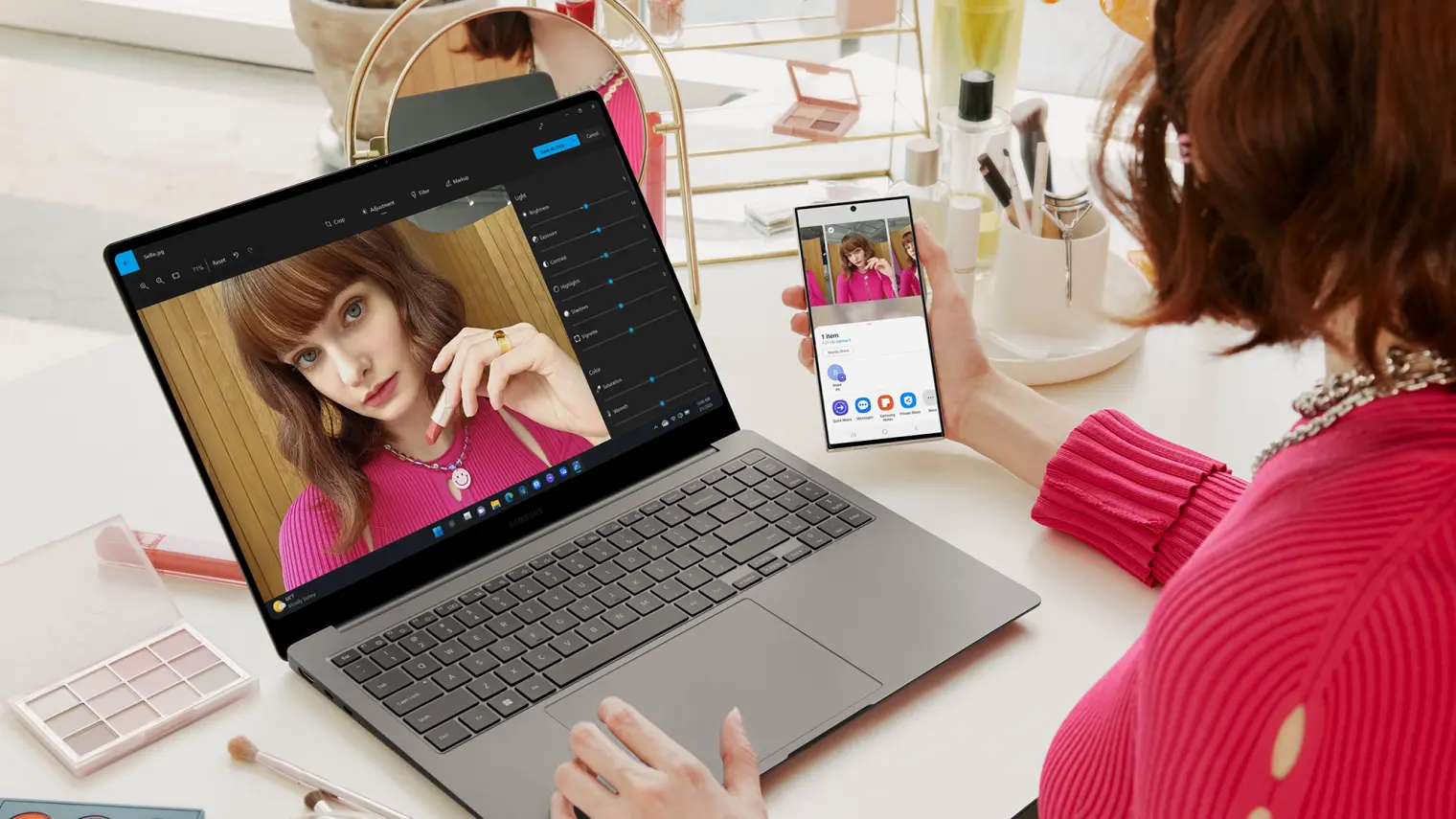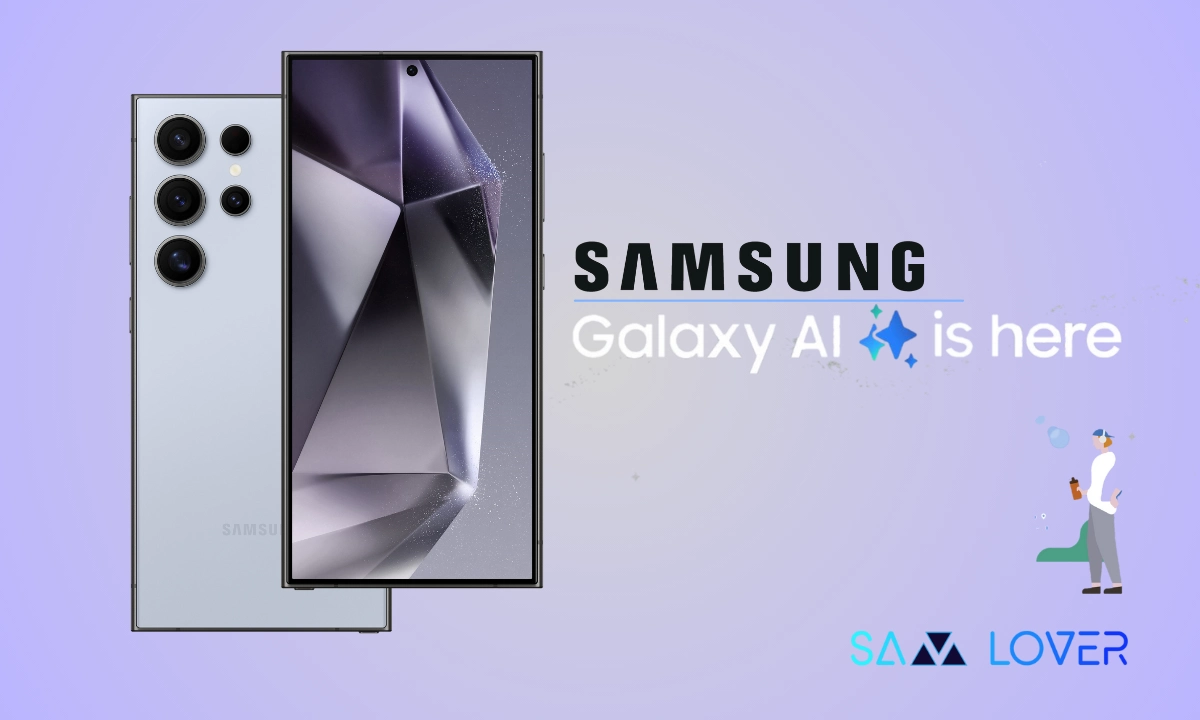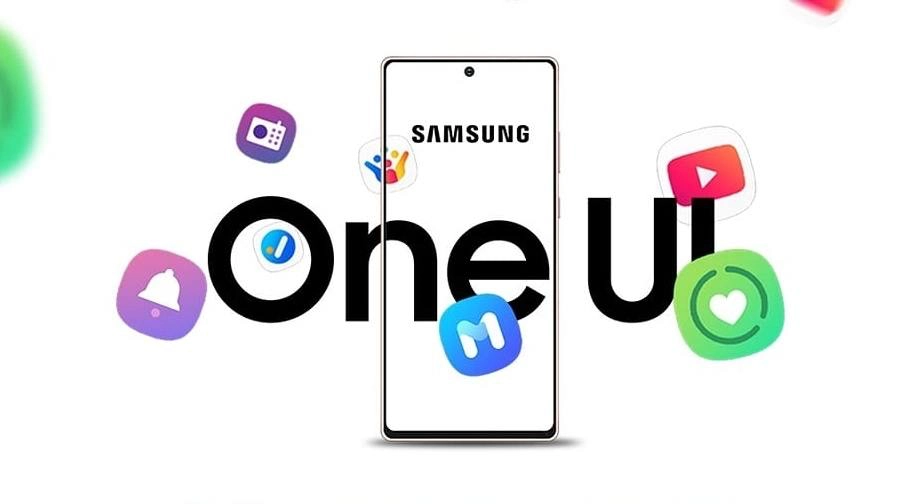Samsung
Samsung Ecosystem Matching Apple’s Tight Integration

Samsung offers a unique ecosystem that delivers a distinct experience as compared to its competitor, Apple.
Samsung has its own OG (original) ecosystem and is even better than its rival Apple in functionality. It’s not just a phrase, but here we are mentioning some of the key reasons why, in many ways, it’s better. However, Samsung lagged behind Apple in delivering a coordinated ecosystem with well-designed gadgets, but that doesn’t mean Samsung has a lack of willpower.
Now, Samsung has covered the gap in some areas and even exceeded Apple in others. Check out the key facts mentioned below:
Samsung’s versatility over Apple
From then to now, Apple has only offered limited models, tons of monopolies, and high-budget. On the other hand, Samsung offers dozens of phones in any size and budget you could prefer. The same fact is true of tablets: Apple’s lineup has gotten more complex, but Samsung is still offering more options.
Samsung has an extra lineup: ‘Foldable phones’ –
Samsung offers dozens of foldable phones; one is a book-style foldable, and the other is a flip, such as the Galaxy Z Fold 5 and the Galaxy Z Flip 5. Also, we are gearing up for the latest Galaxy Z Fold 6 series. Whereas Apple has yet to offer its very first foldable device. Samsung even offers a phone with a built-in stylus, the Galaxy S Ultra’. Apple does not do that sort of thing, ever.
Samsung offers one Galaxy for every Apple device
Samsung offers one Galaxy for each Apple device; for instance, for the Apple Watch, Samsung offers the Galaxy Watch; for AirPods, there’s the Galaxy Buds; for MacBooks, Samsung laptops run Windows; or you can launch Samsung DeX on a Galaxy Tab S9 Ultra. Both brands offer monitors, keyboards, and mice. Somehow, Samsung lacks a VR headset compared to Apple’s Vision Pro, but its ecosystem expands to smart home appliances and even TVs.
Galaxy’ are more compatible than Apple devices.
Comparing the latest devices of both brands, the iPhone 15 Pro Max and the Galaxy S24 Ultra, Samsung offers a better display, more RAM, and faster charging speeds than the iPhone 15 Pro Max.
Jumping on tablets! Galaxy S9 Ultra versus iPad Pro: Samsung offers a 14.6-inch display, whereas Apple offers a 12.9-inch. It is crystal clear that Samsung is winning here.
Samsung’s Galaxy devices are now capable of delivering similar smooth connectivity features as Apple’s. Both Apple and Samsung’s ecosystems let you share files, switch audio between devices, and more; the only difference appears in the way of functionality or features’ names.
Samsung has more features than Apple
Samsung offers more features as compared to Apple; for instance, Samsung’s DeX offers a desktop-like experience on phones and tablets and multitasking with features like resizable windows, app minimization, and a taskbar. Samsung prioritizes a UI to optimize multitasking, whereas Apple boasts a supreme app ecosystem. Samsung has yet to offer a traditional desktop operating system; currently, it integrates heavily with Microsoft’s.
Unlike Apple’s focus on supreme integration within its ecosystem, Samsung prefers to go with quality devices that are capable of performing well independently. Samsung avoids monopolies; you can seamlessly connect your Galaxy devices with non-Galaxy devices like Windows PCs.
These are key facts that transparently prove Samsung’s ecosystem is far better than Apple’s.
Samsung
Galaxy AI Powers Samsung’s Smartphone Sales Surge

Samsung Electronics has disclosed the financial results of its Q1 2024; fortunately, the results are mesmerizing, as the mobile division was upbeat by Galaxy S24 sales.
The Korean brand debuted the Galaxy S24 flagship series in January earlier this year, bringing a slew of Galaxy AI novelties to the phones and older flagship devices. It is reported by Samsung’s mobile and network division that they have won 3.51 trillion of operating profit in Q1 2024, around ~$ 2.54 billion.
It was already reported, again, that the same fact has come into existence: Galaxy AI, a power package of generative AI features, is the key reason behind the sales growth. The brand states that it has decided to bring these AI features to other flagship phones in Q2 2024, but also promises that “it will continue to invest in research and development to further expand and refine Galaxy AI.”
The brand is already all set to debut a bundle of new Galaxy devices at Galaxy Unpacked Event 2024 in July, including the Galaxy Z Fold 6, Galaxy Z Flip 6, the Galaxy Tab S10 series, the Galaxy Watch 7 line, and the Galaxy Ring. Samsung is not the only firm actively working on generative AI features, as AI has become increasingly important in the smartphone industry. Other smartphone manufacturers, such as Google, Xiaomi, OnePlus, OPPO, and more, are also actively looking forward to generative AI facilities.
It appears that the increase in investment also comes after a report that the
Galaxy S25 series would run Google’s Gemini Nano 2 machine learning model. Presently, the current version of Gemini Nano authorizes on-device AI features like recorder summaries and Smart Reply in Gborad.
Samsung
Samsung Unveils Campaign for Paris Olympics 2024

Samsung starts a new campaign to celebrate the Olympics and Paralympics, which are scheduled to be organized in the next few months of this year. The company has named the campaign “Open Always Wins. Through this program, Samsung advertises its brand value of openness with the Olympic and Paralympic Games.
Going into previous company involvement in these events, the Korean giant has always been partnered with the Olympics since the Olympic Winter Games in Nagano in 1998. The company’s commitment to the Olympic movement soon faces its fourth decade of partnership and extends through Los Angeles 2028. Meanwhile, in the Paralympic Games, the company has been invoked since 2006. It has proudly supported the Paralympic movement and encouraged athletes and fans worldwide to share the excitement and inspiration of the Games through Samsung’s transformative mobile technology.

The latest campaign, which is themed “Open, ‘Always Win,’ gives a message about the brand’s belief that openness enables new perspectives and unlimited possibilities that will serve as the heart of its Paris 2024 programming.
In the latest campaign, it shares the stories of team Samsung Galaxy skateboarder Aurelien Giraud (France), ara sprinter Johannes Floors (Germany), and breakdancer Sarah Bee (France) and demonstrates how being open enables you to do extraordinary things.

Additionally, Samsung has also unveiled a brand new showcase, the Olympic Rendezvous @ Samsung Champs-Elysees 125. In this showcase, the company is all set to bring a whole new express to the Olympic and Paralympic Games fans on an epic journey to Paris 2024. In this event, fans can relive the past Games moments with Galaxy, explore the latest innovations, and create long memories with Galaxy AI.
“The entire space is designed to celebrate Samsung’s commitment to openness,” said Jean Nouvel. “The abstract graphic façade captures the reflections of movements and lights that appear and disappear in an instant, while the matte, reflective white mirrors in the lobby invite the discovery of the latest innovations.”
The Olympic rendezvous at Samsung, located at 125 Avenue Champs-Elysees, will open its doors to the public on May 3 and run until October 31 from 10:00 to 20:00 for Monday to Saturday, while on Sunday it will be open from 11:00 to 20:00. In this showcase, there will be a series of special events throughout the summer that will be open to anyone who wants to immerse themselves in the Olympic and Paralympic Games in Paris 2024.
Samsung
Samsung One UI Custom Android Skin – From TouchWiz to Today

Samsung consists of the most advanced yet innovative custom Android skin, the One UI, which is highly customizable and offers the most commendable properties to its customers. This is the reason why Samsung’s One UI has always been under the spotlight. Meanwhile, due to its highly customizable functionalities, it is designed to offer an enhanced multitasking experience to Galaxy users. Unlike other custom Android skins, Samsung’s One UI is still considered the best among all due to its innovative interface.
Samsung One UI Android-based Custom Skin
Here you will go through the entire journey of Samsung’s One UI, including how it started and how it’s going.
Years ago, Samsung designed a highly customizable user interface for its Galaxy phones and tablets so that users could have more options to significantly overhaul their devices, from themes and app icons to home and lock screen layouts. However, Samsung has performed a major overhaul to its One UI, and people have witnessed some big as well as small yet relevant tweaks and enhancements within the functionalities and other features of the One UI.
Samsung has always been committed to making its One UI the most advanced UI for its Galaxy devices. Since its arrival, the brand has undergone several changes in order to make it much better, improved, and highly interactive for the users. With every iteration, the One UI has been consistently aimed at refining the experience of Galaxy users. Here’s all about every OneUI iteration.
One UI 1
Samsung introduced the first iteration of its custom Android skin, the One UI 1.0, back in December 2018 along with the Android 9 Pie OS, while the first phone to get its courtesy was the Galaxy S8, followed by the Note 8 and Note 9, respectively. Later on, Samsung provided the next version, the One UI 1.1, as a pre-installed update on the Galaxy S10 and A lineup, along with the foldable Z Fold.

However, as it was the first version of the One UI skin, it arrived with some minor upgrades and enhancements, including optimizations within cameras, authentication methods, and some other performance optimizations as well. In addition, the One UI 1.5 version, pre-installed on the Galaxy Note 10, also added Link to Windows support.
One UI 2
In November 2019, Galaxy users witnessed a new stable version, the One UI 2.0, which was significantly based on Android 9 out of the box. This stable version brought up some significant enhancements within certain functionalities, including the Dark mode, a dynamic lock screen that allows the phone’s wallpaper to change each time the display is turned on, the Files app’s trash folder, and a built-in screen recorder. The One UI 2.1 brought Quick Share functionality, and the One UI 2.5 introduced Samsung DeX for PC and TV.
The brand provided this build to the Galaxy Note 9, Note 10, S9, and S10 lineups, respectively. However, this build already arrived pre-installed on the Galaxy S10 Lite and Note 10 Lite models. Moreover, other versions, including the One UI 2.1, debuted with the S20 lineup, while the next One UI 2.5 build arrived with the Galaxy Note 20, Z Fold 2, and S20 FE models, respectively.
One UI 3
The third One UI iteration was the One UI 3.0, which arrived in December 2020, while the Galaxy S20 models were the first to get the courtesy of this One UI iteration. This iteration arrived with a translucent notification panel and Samsung Free. Also, the One UI 3.0 came with some animation and transition improvements, along with some revamped home screen widgets. However, the next version, One UI 3.1, introduced no new yet noticeable tweaks and functions but brought some improvements within the camera system. Samsung pre-installed One UI 3.1 on the Galaxy S21 lineup, while the third-generation foldables, the Z Fold3 and Flip3, significantly arrived with the One UI 3.1.1 build.
One UI 4
Launched publicly to every Galaxy user, Samsung unveiled its next One UI iteration, the One UI 4.0, in November 2021, which was significantly based on Android 12. The aim of One UI 4.0 is to offer several irrelevant customizations and privacy capabilities with enhanced haptic feedback, round-shaped widgets, and better location features.

The Galaxy S21 models were the first to get this build, while it came pre-installed on the Galaxy S22 series, while the Galaxy Tab S8 got the courtesy of the One UI 4.1 that brought some noticeable changes and upgrades, including night mode portraits, an enhanced calendar, and a revamped palette picker. However, the One UI 4.1 arrival was followed by the One UI 4.1.1 build, which was based on Android 12, and significantly arrived for the Galaxy foldables, Z Flip4 and Fold4, Tab S6 and Tab S7, as well as the Tab S8 series, respectively.
One UI 5
Now was the turn of the next One UI iteration, One UI 5.0, which was released in October 2022 and was based on Android 13. With the One UI 5.0 build, Galaxy users witnessed some significant yet noticeable revamps, and Samsung overhauled its custom Android skin with the One UI 5.0 version, making it smoother among all the aforementioned One UI iterations. It introduces the proper Material You integration, which certainly allows users to apply the changes within the color palette to the entire UI.

Debuted with the Galaxy S22 series models, the One UI 5.0 update introduced much-improved stacked widgets, along with the ability to add numerous users while also including the guest profile. Moreover, Samsung also unveiled the next version, the One UI 5.1, which brought up a revamped gallery, the latest battery widget, and the integration of expert RAW to the Galaxy S22 and the Z Fold4, while Samsung released the One UI 5.1 with the Galaxy S23 series under the hood. Moreover, the next build version was One UI 5.1.1, which significantly arrived with the Galaxy foldables Z Fold4 and Flip4 along with the Galaxy Tab S8.
One UI 6
Meanwhile, here comes the latest One UI iteration, the One UI 6.0, which is still in the limelight, as Samsung has overhauled this latest One UI version with some commendable features and upgrades. The One UI 6.0 is based on Android 14 and debuted with the Galaxy S23 lineup in August 2023, followed by a stable release at the end of October.

Indeed, Samsung’s One UI 6.0 is still the most improved build so far, as it arrived with some significant enhancements and functionalities, including the addition of the camera widget to the home screen, allowing users to choose their desired camera mode right from the widget without having to open the camera app for choosing the specific camera mode.
Basically, it revamped the Galaxy Camera system, with the camera hardware of the flagships reaching 200 MP. Moreover, this build also revamped the Quick Settings tile and brought up some simple arrangements for certain options, including Wi-Fi, Bluetooth, and Airplane mode. There is an option added for lock screen customization with the capability to move the clock as desired, while also adding several fonts and design options for the clock.
After the One UI 6.0 update, Samsung introduced a new build, the One UI 6.1, which is considered the biggest One UI overhaul and is still in the spotlight due to its commendable functionalities that brought up some of the best possible AI features, dubbed Galaxy AI. Debuted with the current flagship series, the Samsung Galaxy S24 lineup, this new One UI 6.1 introduces several AI-powered features, including the Circle to Search by Google, Live Translate, Chat Assist, Note Assist, Generative Edit, Generative Wallpaper, Interpreter, and Transcription, along with several other Galaxy enhancements and relevant upgrades.
However, this build will be followed by the next version, the One UI 6.1.1, which has not arrived officially, but several leaked reports state that the One UI 6.1.1 might introduce some more AI functionalities such as the Video AI feature and other improvements to its upcoming foldables and tablets.
One UI 7
Samsung will launch the next One UI iteration, One UI 7.0, which will be based on the upcoming Android 15 out of the box. Although Android 15 is still under development, it could be presumed that Samsung has already begun working on the next One UI build, One UI 7.0. Soon after Google will introduce the Android 15 version, Samsung will launch the One UI 7.0 build for all of its upcoming Galaxy devices. Also, it’s expected that this latest and upcoming build will go through some significant overhauls and introduce certain improvements within the functionality of the Galaxy UI.












